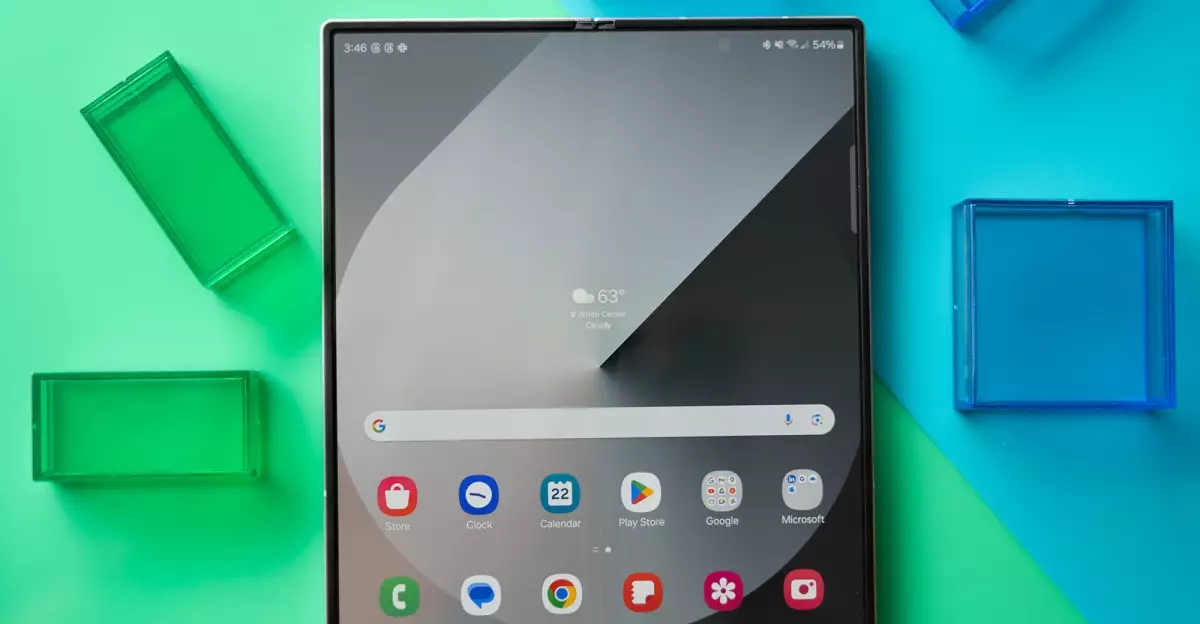Samsung has long positioned itself as the pioneer of foldable smartphones, continuously pushing the envelope with innovative designs and ambitious features. Yet, despite its relentless efforts, the reality remains that foldables constitute a tiny fraction of the global smartphone market—merely around 1.5% as of 2024. This discrepancy highlights a critical gap between technological advancement and consumer adoption. While Samsung’s latest announcements may seem daring and forward-looking, they risk falling short if they don’t fundamentally address the core barriers hindering widespread acceptance.
The core issue isn’t just about adding new features or slapping a premium label like “Ultra” on a device. Instead, it’s about reimagining the foldable experience to match everyday durability, affordability, and user confidence. Samsung’s repeated refreshes—such as the Galaxy Z Flip 6 and Fold 6—have, at best, offered incremental improvements. These updates, while welcomed by enthusiasts, haven’t yet ignited a mass-market frenzy. The challenge remains clear: can Samsung’s upcoming lineup truly pivot the foldable narrative from niche curiosity to mainstream necessity?
Addressing Market Skepticism and Physical Limitations
One of the most pressing hurdles for foldables is their fragility. Unlike traditional flagship phones, foldable devices are inherently more vulnerable to dust, debris, and wear-and-tear. Despite promises of full dustproofing, manufacturers—including Samsung—have yet to deliver a foldable that is reliably IP68-rated against water and dust ingress. This leaves potential buyers hesitant to take the plunge, especially at premium prices exceeding $1,000, when durability concerns loom large.
Additionally, repair costs for these complex devices tend to be high, adding a layer of financial risk. Consumers might question whether the novelty and portability of foldables are worth the potential hassle and expenses if something goes wrong. This risk-reward calculation is a significant factor dampening sales despite the high-tech allure.
Samsung’s strategy seems to be leaning toward diversifying its lineup with more affordable and practical options, such as a rumored “Fan Edition” model and larger front screens. While these moves could reduce barriers to entry, they might still fall short if buyers perceive foldables as less reliable or necessary than conventional smartphones.
The Power of Market Shifts and Emerging Competition
A fascinating aspect of Samsung’s challenge lies in the anticipated influence of Apple’s entry into the foldable arena, expected around 2026. The arrival of an iFold could serve as a catalyst for mainstream adoption, given Apple’s vast ecosystem, loyal user base, and marketing prowess. Historically, Apple’s presence has often elevated product categories from niche to necessity, and a similar effect could happen for foldables, boosting overall market size.
However, relying on an external factor like Apple’s potential product to drive the foldable revolution might be optimistic. The real shift depends on Samsung, Google, and others continuously refining the foldable experience. Samsung’s plan to roll out “Ultra” models with thinner profiles and larger front screens signals a recognition that form factor improvements matter, but whether these tweaks will sway skeptical consumers remains uncertain.
Efforts to diversify the market by segmenting devices across different price points also seem promising. A more accessible foldable could introduce traditional smartphone users to the form factor without the leap of faith associated with early models. Still, the key lies in delivering a durable, cost-effective, and compelling experience that makes the advance toward foldable phones feel like a genuine upgrade rather than a risky novelty.
Innovative Features as the Deciding Factor
Beyond hardware improvements, the success of Samsung’s foldables hinges on introducing features that truly redefine smartphone utility. Larger coverscreens, better multitasking capabilities, and enhanced camera integrations can differentiate foldables from their slab competitors. If Samsung manages to deliver foldables that are not only compact and stylish but also highly functional, they might finally carve out a significant share of the market.
Moreover, brand perception and consumer confidence are critical. Samsung must pivot from merely showcasing foldables as innovative gadgets to demonstrating their everyday reliability. This involves overcoming durability issues, reducing repair costs, and providing reassurance through marketing and after-sales support.
While the company appears poised to push forward with new models and improvements, it’s essential to recognize that technology alone cannot guarantee mass adoption. The market’s readiness, consumer perceptions, and the broader ecosystem are equally vital. Samsung’s future success will depend on its ability not only to innovate but also to persuade a skeptical audience that foldable phones are worth the gamble.
The Uncertain Road Ahead
Ultimately, Samsung’s latest foldable plans represent a bold gamble—one that could either redefine the smartphone landscape or reinforce its status as a niche product. The company’s willingness to experiment with form factors, pricing, and features reflects a recognition that the foldable revolution requires more than just incremental upgrades. It demands a fundamental shift in how consumers perceive value, durability, and utility.
While the industry waits for the next wave of Samsung foldables, a cautious optimism is warranted. Without addressing core consumer concerns—namely durability, price, and practicality—these devices risk remaining a high-end curiosity rather than transforming broader mobile behaviors. Still, with strategic innovation and perhaps a dash of Apple’s influence, the foldable market might finally break free from its small size and start to expand in meaningful ways. The question is whether Samsung’s upcoming lineup will be adventurous enough to lead that charge or if it will simply be another step in an incremental journey.

